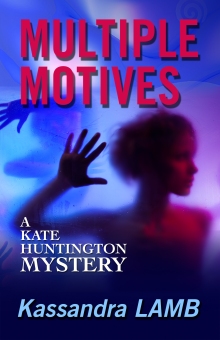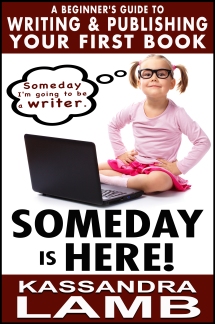Marcia asked me to share this post with you all. It’s one I wrote recently for the Alliance of Independent Authors, on the need to occasionally revisit the pantser/plotter question as we progress through our writing careers.
From Pantser to Plotter, or Maybe Plantser?
by Kassandra Lamb
For eight years, I’ve been a die-hard pantser. No outline, no character sketches… just sit down and write.
But now I’m going over to the other side, or rather straddling the cusp.
I’ll always be grateful for my pantser roots. I didn’t successfully finish a manuscript until I realized I was a pantser. For years, I’d write the beginning of a story, outline the rest and then the whole thing would languish in my hard drive. I’d lost interest. The story had already been told.
In 2009, I sat down to once again tweak the opening of a novel I’d been playing with for fifteen years. (Yup, fifteen years!) But I couldn’t find the outline. Somehow I’d lost the file. So I started writing, and six weeks later the first draft was finished.

My first finished novel, 15+ years in the making. Now it’s the permafree first book in a 9-book series.
Now it’s 2017. That book, Multiple Motives, is the first in a nine-book mystery series, and I’ve recently released Book 3 in a new series. But in recent years, it’s been like pulling teeth to get through a first draft.
While writing this last story (The Call of the Woof; Woof for short), I finally identified the problem. My motives for writing have changed.
Initially, the ideas arrived, the words flowed, and I wrote for the sheer pleasure of seeing what happened next.
Then the first-drafting process became more challenging. My editor said it was because I was a better writer. My stories were more complex, my characters had more depth, etc. She’s probably right, but something else was happening as well.
More and more, I was writing to a schedule, especially after I started the second series. If too much time passes without a new release, sales droop. The pressure is on to pump out more stories to keep readers interested.
Don’t get me wrong, this is good motivation. How can you not want to produce stories for your adoring fans?
But it wasn’t the same. I still loved the writing process—when the words were flowing. But all too often they weren’t. Before, the scenes would unfold in my mind as I went along. Now, I’d get to the end of a scene and think “What’s next?” And no answer would come. Often that would be the end of new words for that day.
With Woof, as I got closer to the end and had a clearer idea of what scenes still needed to happen, the writing pace picked up. Instead of forcing out a few hundred words a day, I was breezing through several thousand.
The story was flowing and I was having fun again!
Then I thought about the next project coming up, and felt nothing but dread as I faced the void between the opening and the climax. So I experimented with outlining. While Woof was “resting” before the editing process, I did a bare-bones outline for that next story.
And I’m excited about writing it! Indeed, I found myself stealing an hour here and there to pluck away at it, when I was supposed to be editing Woof (and I love editing).
With the plot points already thought out that will get me through the murky middle, all I have to do is enjoy the flow of the words.
I doubt I’ll ever be a full-blown plotter with character sketches and beat sheets (not even sure what those are) and such. But if I have a better idea of where I’m going, I think I will get there a lot easier and faster in the future.
And have more fun doing it!

Kassandra Lamb is a retired psychotherapist turned mystery writer who spends most of her time in an alternate universe with her characters. The portal to this universe, aka her computer, is located in North Central Florida, where her husband and dog catch occasional glimpses of her.
She is the author of the Kate Huntington psychological mysteries, set in her native Maryland, a new series, the Marcia Banks and Buddy cozy mysteries, set in Central Florida, and a guide for novice authors, Someday Is Here! A Beginner’s Guide to Writing and Publishing Your First Book.

This easy-to-read, how-to guide is full of both practical advice and emotional support. Psychotherapist turned successful mystery writer, Kassandra Lamb takes novice writers by the hand and walks with them on their journey, pointing out pitfalls along the way, some of which she discovered through stumbled-head-first-into-them experience.
From the decisions to be made before setting pen to paper to whether to submit to agents or self-publish, from the basics of writing craft to the nuts and bolts of copyrighting and ISBNs, from promotion strategies to the perseverance needed to make your writing business a success, this overview of the writing and publishing process is a must-read for new authors who aren’t sure what they’re getting themselves into.

I think you may have hit the nail on my head!! After writing 6 books, panster style, I am having trouble with book 7. Perhaps I need to evolve into a Planster as well. Thanks for this, Kassandra.
LikeLiked by 3 people
You are very welcome, Darlene. Glad it struck a chord for you and was helpful!
LikeLiked by 1 person
Thanks, Kassandra. In my case, I’ve written different stories differently. Sometimes I write to a vague outline, or with only a few chapters planned. Others I start writing and I’d reach a point when I need to make sure things fit in so I’ll do an outline of the final chapters. Mind you, my outlines are bare and have little detail. It’s a good idea to try the other way if you get stuck.
LikeLiked by 4 people
Good point, Olga! I’m currently writing a short story (that is evolving into a novella) and I’m pantsing it all the way. But there are a lot less twists and turns in a short, so it’s easier to just keep it all in my head.
And a bit of plotting is a great way to get “unstuck.” What amazes me is that I didn’t think of it sooner.
(Thanks for the reblog!)
LikeLiked by 2 people
Pingback: From Pantser to Plotter, or Maybe Plantser? #FabulousFridayGuestBlogger | The Write Stuff | Just Olga
I’m still mostly a panster, even with having one 3-book series under my belt and another under contract. Because you have to maintain continuity in a series, you think I’d be better about plotting. One of these days I’m going to learn. There’s definitely a benefit to it, and I do a small amount. I guess I’m a planster with more pantsing than plotting. 🙂
Thanks for a great post!
LikeLiked by 4 people
I definitely still lean heavily toward pantsing, Mae. I don’t think either approach is right or wrong. One just has to find the balance that works for them. For me, too much plotting sucks the creative juices dry, so I have to be careful I don’t overdo it.
For continuity in a series, I’ve started a series bible for my second series. Should have done it with the first one (another palm to forehead moment!) It makes it easier to keep track of details about setting and characters’ traits, physical and personality-wise.
LikeLiked by 3 people
Now THIS is something I need to do better at. Keeping track of dates and ages is my issue. Plus remembering what I’ve named some minor character from Book 1 that pops up again in Book 2. Or was just a brief bit of backstory, but gets referred to again. I must put one together for each of my series BEFORE I even start on the next Rabbit book. You’ve inspired me, Kass!
LikeLiked by 3 people
LOL! I’m doing the same thing with my current series. Halfway through the last one I realized the importance of jotting down insignificant details I thought I wouldn’t reuse. Now I know better! 🙂
LikeLiked by 3 people
Thanks so much for sharing this thought-provoking post, Kass. I have always been a pantser, myself, except that I usually know where my story is going. I know the subject, the basic problem/theme, and how it’s going to end. But all the details and characters in between, I make up as I go, pretty much. This usually results in a sub-plot or two I didn’t expect.
I usually know the gist of the story before I start, though I don’t write it down. For instance, Girl 1 and Boy 1 have loved each other for years, but neither knows about the other’s feelings. Something (to be decided as I go) spurs a connection. Something (to be decided as I go) terrible happens that throws Boy 1 into a tailspin. Girl 1 never gives up. They make their way back together for an HEA. Result: Finding Hunter. But that’s as close to an outline as I’ve ever gotten, and it’s far more of one than I had with earlier books, too. (Rabbit doesn’t count. His story came to me in a dream, and I woke up with all the salient points in place the next day. I keep trying to repeat that, but so far, it’s not working.)
That being said, I’ve only been writing four years, and have only published 7 books, counting my new novella. I suspect outlining might become involved in the process at some point. Or at least, more than I’m doing now. So, I’m leaning more towards plantser. Some combination of winging it and planning it might begin to occur.
Another factor is that I have no outside pressure on me to come up with a story in a certain time frame. I’m really, REALLY bad at things I feel I “have” to do. At that point, I become a feet plantster, as in I’m putting on the brakes, and no longer interested. So from my perspective, knowing the ONLY reason I’m writing any story is because I want to works very well. I’m the boss of me, and if things go wrong, I know exactly who to blame. 😀
Again, super article, and I know many will take home a new perspective on the whole pantser/plantser idea. As long as we all find a way that works for us, it’s all good, right?
LikeLiked by 3 people
“Feet plantser”…LOL I know exactly what you mean. Nothing makes me more resistant than someone saying I “have” to do something.
I think it’s so important that each writer find the spot on the pantser/plotter continuum that works for them. And what amazed me about my little discovery is that we have to revisit that decision occasionally, because things can change.
LikeLiked by 2 people
For sure, life is all about change, and being able to adapt is what keeps us going. And sane. 🙂 I always say nothing I do is carved in stone. Tomorrow, I might decide to do a completely different direction.
Again, thanks for sharing this post today, Kass. I enjoyed hearing how your approach to writing is changing as you go. 🙂
LikeLiked by 2 people
Great post, Kasandra. It’s been really interesting reading the responses to it. I think I must be a ‘plantster’ – although with short stories I’m defintiely a panster – a character arrives or a scene and I go with it. When I tried to write a sequel to No More Mulberries, however, I found myself in big trouble and having to create timelines and notes of the different ages people would now be – kind of gave up. Maybe I should do NaNoWriMo and see if that gets me going again.
LikeLiked by 2 people
Mary, you might try something I learned to do. When not sure about a name or someone’s age, etc. I write myself a BIG NOTE (in all caps) right in the middle of the ms. “CHECK JOE’S AGE” Then when I do the first rewrite I go back and check/adjust those things. That way the flow of the first draft isn’t constantly being interrupted.
LikeLiked by 2 people
Sounds like a god idea and worth trying – thank you.
LikeLiked by 2 people
Just be sure you get all of those notes out of there before you send it to beta readers. One time I sent a story out with “CHECK WHAT POLICE LOBBIES LOOK LIKE” still in there. Got some ribbing about that from my betas. 😀
LikeLiked by 2 people
Hahahahahahaha. I love it, Kass! I can just see them, scratching their heads and going, “Huh?”
LikeLiked by 1 person
I belong to the ‘plantser’ club too.
My first five novels (three published, two not) were written by my pure pantser persona. And then I began to get stuck.
I don’t have the issue of external time pressure (I don’t have the opportunity to write to a schedule, which I will be posting about any day), but I do have the self-imposed pressure of wanting to produce constantly good novels, and having got two novels into a series with complex, ongoing plot threads, I have found the only answer is to at least produce an outline, even if it isn’t very comprehensive. That way, I can make sure I don’t (a) drop the ball on any of the important series threads, or (b) write in any inconsistencies in either my world or my characters.
It also helps me lay out character arcs for each of my viewpoint characters (4 or 5 per novel), and figure out how best to show their progression.
I don’t ever want to construct my novels fully, scene by scene, before sitting down to write them – that would kill my creativity and my enjoyment in the process, but outlining is certainly going to reduce the amount of rewriting I need to do.
Dammit! I enjoy rewriting…
LikeLiked by 2 people
I enjoy rewriting too, Deborah. More than first drafting these days. I figured if a little outlining gets me through the first draft faster, that’s doubly a good thing, so I can get to the rewriting that much sooner! 🙂
LikeLiked by 1 person
Good way to look at it. I shall endeavour to adopt your approach 😀
LikeLiked by 1 person
Fantastic share Kassandra. I think many pantsers begin to form some sort of their own style of outline after a few books under our belts. I know the same happened to me. Albeit, I do have some pre-historics methods, but writing life is easier with guidelines. 🙂
LikeLiked by 3 people
I’m a little surprised by how many of us have made this adjustment toward plantsing. It’s definitely making first drafting easier for me.
LikeLiked by 2 people
I know! And I love your word ‘plantsing’ because I’ve always called myself a ‘plotser’ LOL 🙂
LikeLiked by 1 person
Thanks for sharing. I enjoyed your post and can learn from it.
LikeLike
Thanks, Cynthia. Glad you found it helpful!
LikeLike